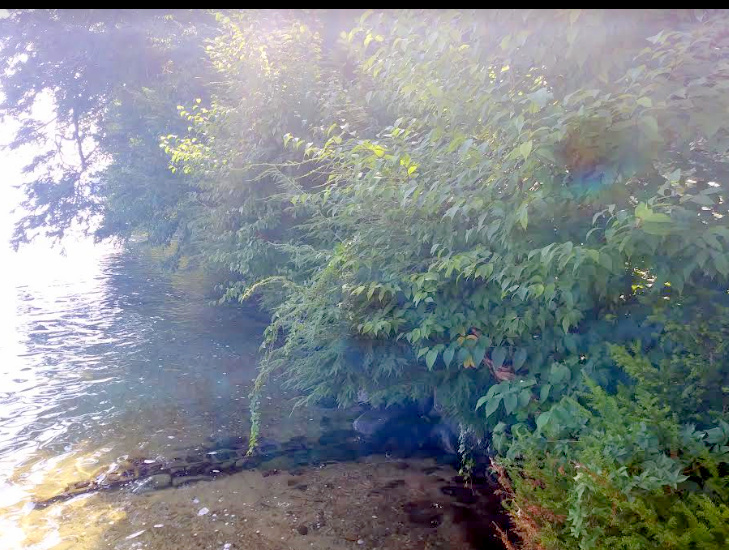

 |
 |
|
|||||||
| Home | Forums | Gallery | Webcams | Blogs | YouTube Channel | Classifieds | Register | FAQ | Donate | Members List | Today's Posts | Search |
 |
|
|
Thread Tools | Display Modes |
|
|
|
|
#1 | |||
|
Senior Member
Join Date: Apr 2004
Location: Kuna ID
Posts: 2,755
Thanks: 246
Thanked 1,942 Times in 802 Posts
|
Quote:
Quote:
 I’d in 50+ years that tree would have been a gonner by now. I’d in 50+ years that tree would have been a gonner by now. Quote:
Your “common sense” assumption about compounding waves, either naturally occurring or man made is wrong. Waves on water display similar characteristics of energy or RF waves. They operate at a specific frequency, which varies as to when, where and by what created them, therefore when they cross they continue on. In fact if you look closely on a typical light breeze day you can see the smaller wind driven waves continuing on their path unimpeded by man made waves, and may be travelling in a completely different direction. Furthermore once man made waves are created they are not subject to any kind of amplification. So in time they dissipate lacking a means of amplification. This differs in the case of wind driven waves where the wind acts as a means of amplification to the point where the wave size is a direct match to the amount of amplification they are exposed to, hence when the wind dies down so do the waves. I’m sure there are others on here much smarter than me that can explain the physics of this far better than I can. BTW here is a photo of a sapling growing at an angle off the shore, one of several. They are growing that way not because of shifting soils, but because they are growing towards the light and where they will not be crowded by other trees. I can tell you for a FACT this soil has not moved in the past 3-4 years which is about the age of that sapling. Just out of the shot here are large hemlock and pine trees that block the sun for the better part of the day. |
|||
|
|

|
|
|
#2 | ||
|
Senior Member
Join Date: Jan 2005
Location: Florida (Sebring & Keys), Wolfeboro
Posts: 5,939
Thanks: 2,209
Thanked 776 Times in 553 Posts
|
Quote:
 YMMV . So how old would you estimate that bent tree in that photo to be? I’d say 50+ years, let’s go with 50 shall we? So according to your logic, and I’ll stipulate (even though there is 0 proof of this but I digress) for the purposes of this discussion to say this happened in years 0-5 years of its life, after all you said it happened when it was young. This would have happened in 1973 long before there was the large population of APS non approved “oversized” boats as there is today and for all these years it has managed to live a happy and content life. Hmm….  I’d in 50+ years that tree would have been a gonner by now. I’d in 50+ years that tree would have been a gonner by now. Yes this does confuse me… wakes are waves. Just man made. Your “common sense” assumption about compounding waves, either naturally occurring or man made is wrong. Waves on water display similar characteristics of energy or RF waves. They operate at a specific frequency, which varies as to when, where and by what created them, therefore when they cross they continue on. In fact if you look closely on a typical light breeze day you can see the smaller wind driven waves continuing on their path unimpeded by man made waves, and may be travelling in a completely different direction. Furthermore once man made waves are created they are not subject to any kind of amplification. So in time they dissipate lacking a means of amplification. This differs in the case of wind driven waves where the wind acts as a means of amplification to the point where the wave size is a direct match to the amount of amplification they are exposed to, hence when the wind dies down so do the waves. I’m sure there are others on here much smarter than me that can explain the physics of this far better than I can. Quote:
It is so weak, it doesn't have the natural immunities to fight what is ailing it. It is so "chewed", I can't tell what species it is. (Species would help—Is it Witch Hazel, which actively seeks sun—like a vine?) Contrast your "healthy" shoreline... ...with ours. Although we're still losing older trees—with their large roots—to boat wake damage, we're fighting further shoreline loss with the intricate and intertwining root structure of shrubbery—including Blueberry and Juniper (the best):  .
__________________
Is it  "Common Sense" isn't. "Common Sense" isn't. 
|
||
|
|

|
 |
| Bookmarks |
|
|